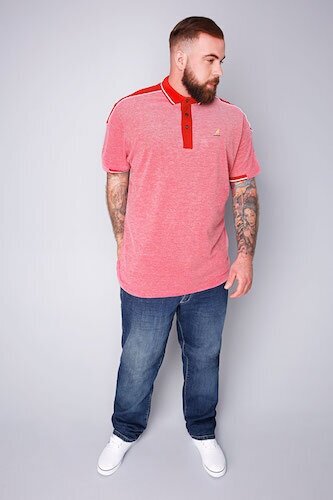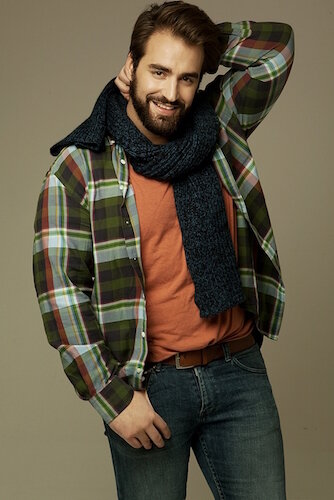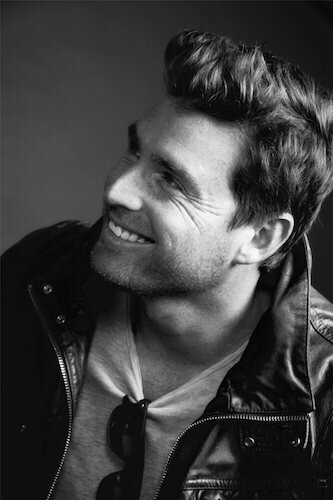The Male Body Positivity Movement
Photo courtesy of Chubbies
The Male Body Positivity Movement Is About To Get A Huge Boost
By Corey Kelly for Askmen.com
Move over, David Gandy! There’s a new male model on the scene who’s now ready for his close-up: Say hello to Zach Miko — the first guy to sign with Brawn, IMG Models’ newest division for plus-sized men. An avid supporter of the male body positivity movement, he’s a social media force to be reckoned with thanks to his sizeable — not to mention extremely loyal — Instagram following (Over 61,000 and counting). Although his towering six-foot-six frame and forty-inch waistline recently received media attention from the likes of American Vogue, People, The New York Times and Good Morning America, the majority of the fashion world unfortunately hasn’t caught up yet.
“My main goal is to one day be able to walk into a store of [my favorite] brand or designer, pick out an outfit I like, try it on, it fits, pay for it and walk out of the store,” says Miko. “That sounds so simple. But that’s an experience I’ve never had in my life.”
His discouragement in shopping for apparel is pretty common with most guys when you start to break down the facts. According to the Centers for Disease Control & Prevention, the average American male’s waistline is a hefty 39.7 inches. Think about it: A majority of the U.S. men’s population is considered to be plus-sized, yet the fashion industry still hasn’t tapped into this market. “[A] vast majority of brands and designers don’t make pants bigger than a size 38 or in some cases even a 36. The women’s industry has made incredible progress…bringing the women’s plus-sized industry to a $20-billion business. It’s time for the men’s industry to catch up. ”
Photo courtesy of IMG
Zach Miko, IMG’s First Male Plus-Sized Model
Hailing from Stratford, Connecticut, Miko worked as a New York City-based actor and comedian before his “very serendipitous” transition into fashion modeling. It all started when his talent manager’s friend happened to be desperately looking for a “big & tall” guy for an upcoming photoshoot. Curious about the gig, he stopped by the casting and eventually — surprise, surprise — landed the job. A few months later, after gaining enough experience in front of the camera, he received an Instagram message from none other than Ivan Bart, president of IMG Models. It’s safe to say the rest is history.
“For the most part, I’ve been working for some incredible brands that are strictly ‘Big & Tall,’” he says. “But, lately, I’ve been branching out into bigger brands and even some skincare and haircare lines.
Target’s Commitment To Change
Target, the retail giant known for their long history of inclusivity, gave Miko his first big break last year after including him in a shoot. Since then, he consistently continues to model for them. “[Inclusivity] is a guiding principle behind everything we do, including our marketing efforts,” says Jessica Carlson, Target’s spokesperson. “Our guests look to Target for inspiration, so it’s important that our efforts reflect [their] diversity.”
And diversity is what keeps Miko striving along to create a positive change in a very superficial industry. “There’s a whole world with people of all shapes, sizes, ages, races, beliefs, preferences, and that diversity and individuality is what is really beautiful,” he says. “I hope anyone who feels bad about how they look can open up a magazine, see someone like me and say, ‘Hey, he looks great! And he reminds me of myself, which must mean I look great!’
Photo courtesy of IMG
From Scrawny To Brawn(y)
Male beauty standards within the modeling industry change faster than models getting dressed backstage during fashion week. Hunks like Marcus Scheckenberg and Tyson Beckford represented the wholesome aesthetic of the Nineties while the early-Aughts experienced a major shift towards a skinnier, more youthful look. But, thanks to IMG’s choice to launch its Brawn division, some are questioning whether trends will shift from scrawny to brawny.
“People want to see themselves represented in the media, and at the moment there is only one type of male model showcased,” says Steven Martin, a plus-sized model recently profiled by Buzzfeed and the Irish Examiner. “This [approach] doesn't speak to the average Joe [nor] the mass market, so it is time for change.
Bridge Model Steven Martin
Bridge Models, a London-based modeling agency specializing in plus-sized women, is riding that wave for change with their newly-minted men’s division. “Starting a new division was something we had discussed to see if there was a real demand,” says Charlotte Griffiths, co-director of Bridge Models. “A couple of clients mentioned that it was something they were considering, which made us believe the industry was ready for this step.”
Bridge Model Peter Meyer
In addition to Steven Martin, the agency also represents Ben Whit and Peter Meyer, all of whom model for a range of commercial, catalog and online fashion clientele. “I hope to change the industry to a point where the term ‘plus-size’ is no longer needed,” says newcomer Ben Whit. Models are just models and [should be] recognized for their profession [and] not [for] their size.”
Big, Bold & Branded
Despite the fashion industry’s lack of men’s designers catering to larger waistlines, brands like Bad Rhino offer hope for the plus-sized male.
“Our already-established plus-size womenswear brand Yours Clothing has seen significant growth in the last 5 years…and it became apparent what opportunity there was to begin a range of men’s clothing,” says Amy Lindley, menswear marketing manager for Bad Rhino. “The men in the lives of Yours’ customers are often larger, taller guys who really struggle to find affordable, well-fitting yet stylish clothes.”
Photo courtesy of Chubbies
Designed with realistic body shapes in mind, their clothing is perfectly tailored in soft, stretchy fabrics. “We want the best and most flattering fit for our customers — we only use real men of all shapes, sizes and ages when designing and creating garments,” she says. “During wearer trials, our guys give valuable feedback so that we can fine-tune every detail until it’s just right.”
Chubbies, a popular line of shorts known for their tongue-in-cheek approach to branding, understands the meaning of inclusion: Not only is their clothing offered in larger sizes, but their marketing team is hyper-aware of their customer and how to communicate to him.
“It was never even a thought in our minds to hire models,” says Tom Montgomery, co-founder of Chubbies. “The most natural way for us to show people our product was just to recruit friends to be in our campaign. As the business grew, we started to realize that the most important thing, when it came to our ‘models,’ wasn’t washboard abs or perfectly coiffed hair; [it] was the amazing character of these guys and the confidence that they brought to the shoots.”
“We’re all about confidence here,” he continues. “We want everyone to feel good in their skin…Hopefully, we see more and more body types that actually represent the population and fewer and fewer people feeling any sort of alienation from that — up until now — extremely exclusive world.”
Photo courtesy of Chubbies
Blogging For A Bigger Purpose
For Kelvin Davis, a bad shopping experience at Express inspired him to create Notoriously Dapper, a body-positive fashion blog. “I went to go try on a red blazer [in my size] and it didn't fit, [nor did they] carry it in a larger size,” he says. “It was then I realized how the fashion industry is telling men they should be slim and skinny. It made me feel self-conscious and I vowed never to feel that way again!”
Kelvin Davis, Modeling For Notoriously Dapper
Launched in 2013, Notoriously Dapper offers plus-sized men inspiration and tips on how to rock the latest styles and trends. More importantly, it serves as an awareness platform to help all types of men feel comfortable about their bodies. “Men have never talked about the body issues they feel from the media’s perception of masculinity and male beauty,” he says. “People are starting to realize that men do have body image issues and suffer from wanting to look like the media portrayal of beauty.”
Photo courtesy of American Eagle








